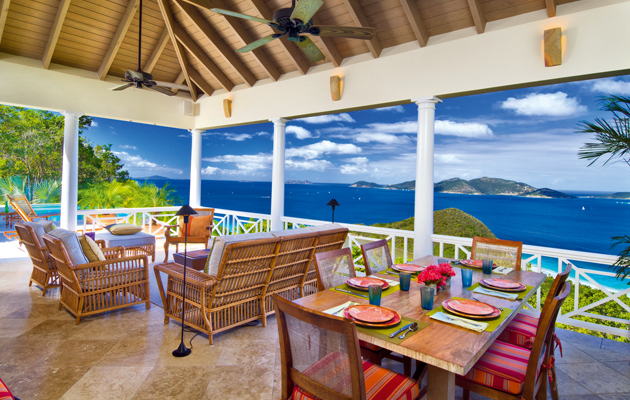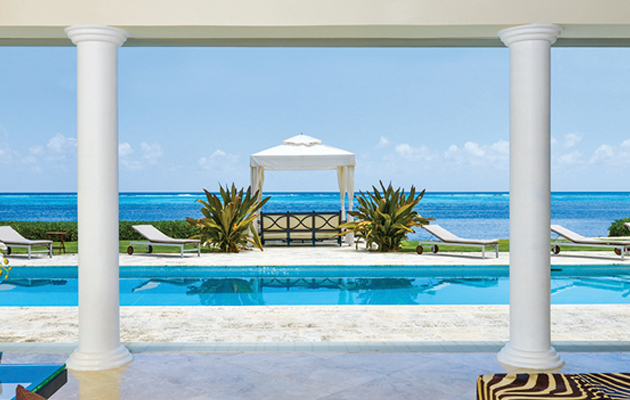St Barths: The other side of paradise
Camilla Akers-Douglas goes in search of the less-visited side of the Caribbean island of St Barths.

It would be a mistake for any traveller seeking peace and quiet to visit St Barths at Christmas and New Year. Then, the island’s single-track roads are jammed by a party crowd in search of the high life. Sean ‘Diddy’ Combs sails in on his monster yacht, Beyoncé and Jay-Z jet in and Roman Abramovich throws a New Year’s Eve party at his beachside residence.
Those two weeks over, St Barths returns to its existence as a tiny volcanic island with a rugged coastline and sapphire waters that lap against near-deserted beaches. Its land is poor and never sustained agriculture, so it has no real history of a slave trade, as there is on Martinique and Guadeloupe. The lingering darkness of history doesn’t exist here, allowing the island to be simply a paradise away from the hurly-burly of modern life.
St Barths’s 9,000 inhabitants are mostly descended from the original Swedish and French families who came here in the 18th century. The island’s Swedish legacy is most noticeable in the architecture of Gustavia, the island’s pastel-coloured port and capital, and all around the island are dilapidated clapboard houses with pretty shutters. In 1878, Sweden gave St Barths to the French, which accounts for the island’s low-key, elegant esprit de France. In the morning, you can buy fresh croissants from the boulangerie and, in shady squares, pétanque is played on sandy pistes.
‘What my wife, Mandie, and I have always loved about St Barths is that it’s really the South of France in the tropics,’ says Charlie Vere Nicoll, the island’s vicar. ‘There is a wonderful mix of people from so many cultures and backgrounds with different life experiences. This, combined with the island’s lack of crime and poverty, makes for an unusually harmonious community.’
Fashionistas will head for the designer shops in Gustavia and the pristine sands of St Jean and Nikki Beach, but, like many who come to St Barths in winter, I wanted the balm of peacefulness and sunshine, so I decided to explore the island’s beautiful but lesser-known (and less-visited) beaches. Anse de Grand Fond is down the only road in the lush Grand Fond valley. It’s stony far more Hebridean than Caribbean in its desolate beauty and, from here, you can reach a natural swimming pool among the rocks.
We walked right along the cliff path and were thrilled to see, on the hillside high above us, three of the island’s 1,000 wild goats. When we reached the pool, we walked gingerly over the rocks, avoiding spiky anemones, and swam shielded from the waves beyond. (It’s best to visit this pool in the morning as, by lunchtime, it’s in shade.)
Mr Abramovich’s decision to buy a house at Anse de Gouverneur (behind and out of the sight of the beach) drew attention to this long stretch of soft sand on the Caribbean side of the island. Still, it’s an enchanting place. One afternoon, against a backdrop of elongated cacti and spiky succulents, we luxuriated in the calm waters while the children played in the rocky shallows at the edge of the beach.
Exquisite houses, the beauty of Nature, and how to get the most from your life, straight to your inbox.
In search of raw beauty, I went down to the marshy salt flats at the south end of the island, where the inhabitants once harvested the salt. Wildly beautiful and remote, Anse de Grande Saline offers lovely swimming and snorkelling very far from the beaten track. A walk from a small car park, down a sandy path through the dunes, delivered me to a vast plain of white sand. In 2013, it was rated the fifth best beach in the world by CNN.
For me, however, the most sub-lime beach is on the island’s north-westerly tip. Anse de Colombier is a 25-minute walk along a path around which giant cacti grow and tortoises amble to meet you. Shallow steps have been cut into black volcanic rock to ease the way. When you arrive, you think there’s nothing here apart from a few boats and a handful of swimmers, but just visible on the westerly headland is the sculpted form of a house built by David Rockefeller in 1960. My daughter and I swam the length of the beach to the house’s old jetty and back again like a pair of porpoises, then unpacked a picnic and watched the sun set behind a silken sea.
At the end of our stay, I found one more quiet, soul-stirringly beautiful beach. Anse des Flamands is on the Atlantic side of St Barths. Here, the sand is soft, the waves strong and, although the clear-blue sea gets deep quickly, the bathing is safe.
At one end of this great white arc is the glamorous Cheval Blanc St-Barth Isle de France hotel (the loveliest place to stay on the island if you want to be close to a beach) and, at the other, a scattering of local houses in between, there’s nothing much at all. The American art dealer Larry Gagosian has built a beachfront house here, but it’s hardly noticeable.
Ignore the glitzy images of famous people who visit St Barths if you want to find it, there’s a magical island that is utterly different from the one you see splashed all over the pages of magazines.
Cheval Blanc St-Barth Isle de France (00 590 590 27 61 81; http://stbarthisledefrance.chevalblanc.com), from €590 a night for a garden room in low season. Camilla Akers-Douglas flew with British Airways from London Gatwick to Antigua. There are daily connecting flights with Trade-wind Aviation to St Barths

Idyllic Caribbean properties for sale
If you're looking for a property in paradise, consider one of these luxury houses in the Caribbean.

Buying property in the Caribbean
Arabella Youens explores the best places to buy in the Caribbean.

Credit: Agnes Stamp
Big Five Horse Safari
Wait A Little Horse Safaris offers experienced riders a once-in-a-lifetime opportunity to view the 'Big Five' from horseback.

Islands in the sun
Beat the winter blues with these idyllic properties in the sun.